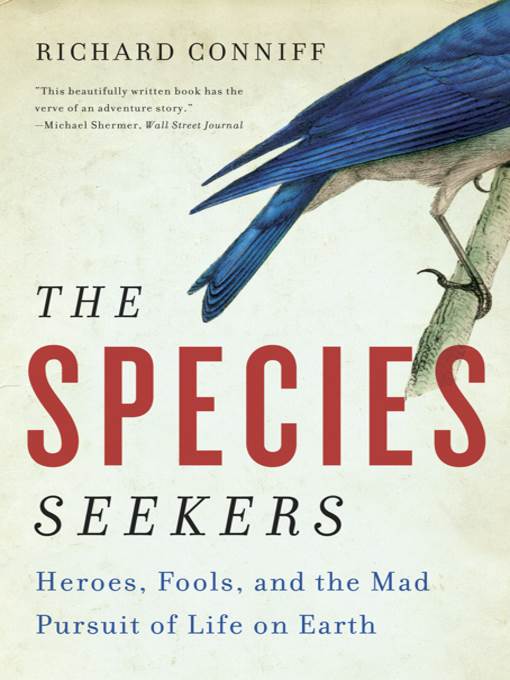
The Species Seekers
Heroes, Fools, and the Mad Pursuit of Life on Earth
- اطلاعات
- نقد و بررسی
- دیدگاه کاربران
نقد و بررسی

September 13, 2010
Until about 1834, the word "scientist" didn't exist. According to naturalist Conniff (Swimming with Piranhas at Feeding Time), it was likely at a meeting of the British Association for the Advancement of Science) where a member, following the model of "artist" and "atheist," coined a new term—"scientist" reflecting the transition of the nascent study of plants and animals from self-educated hobbyists to a new breed of professional. The author blows the fusty dust of centuries off an exhaustive bibliography of almost 300 books, many published in the 1800s. Conniff tells a fresh story that begins with Swedish botanist Carolus Linnaeus's creation of a species classification system in 1735, through Darwin's development of the theory of evolution—and of how, then as now, it was a challenge to religious orthodoxy—to the present as new species continue to be discovered, including in this decade a striped rabbit in the Mekong Delta. Conniff's parade of pioneers whose colorful exploits are recounted is at times overwhelming, but this history of the "great age of discovery" is spellbinding.

August 15, 2010
Nature writer Conniff (Swimming with Piranhas at Feeding Time: My Life Doing Dumb Stuff with Animals, 2009, etc.) chronicles the obsessions and joys of naturalists who, in the 18th and 19th centuries, fanned out across the globe in pursuit of new species.
"For that sense of private joy in small moments of discovery," writes the author, these adventurers and scientists willingly braved "hunger, loneliness, disease and other hardships of field life." Collectively, their discoveries contributed a body of knowledge that laid the ground for Charles Darwin's On the Origin of Species (1859). A century earlier, Carolus Linnaeus' classification scheme helped systematize the new knowledge, although the discovery of strange fossils challenged his belief in the Bible (e.g., five-pound teeth of extinct mammoths found in the American colonies). George Washington's private collection included one, and Thomas Jefferson referenced them to refute claims that New World species were stunted because the supposedly inhospitable climate. Darwin's evolutionary theory of natural selection challenged contemporary notions of man's special relationship to God and suggested the alarming notion that humans had evolved from an orangutan. When Linnaeus published the 1758 edition of Systema Naturae, he listed 4,400 species; at the end of the 19th century, 415,600 were known. "But even today," writes Conniff, "with the total of known species pushing 2 million, new species continue to turn up almost everywhere in the modern world." The author considers these continued discoveries to be "a broad triumph of the human mind," and his enthusiasm for his subject and admiration of these explorers is infectious.
An entertaining survey of a well-worked field that should go nicely alongside the raft of books published for the 2009 Darwin bicentennial.
(COPYRIGHT (2010) KIRKUS REVIEWS/NIELSEN BUSINESS MEDIA, INC. ALL RIGHTS RESERVED.)




دیدگاه کاربران